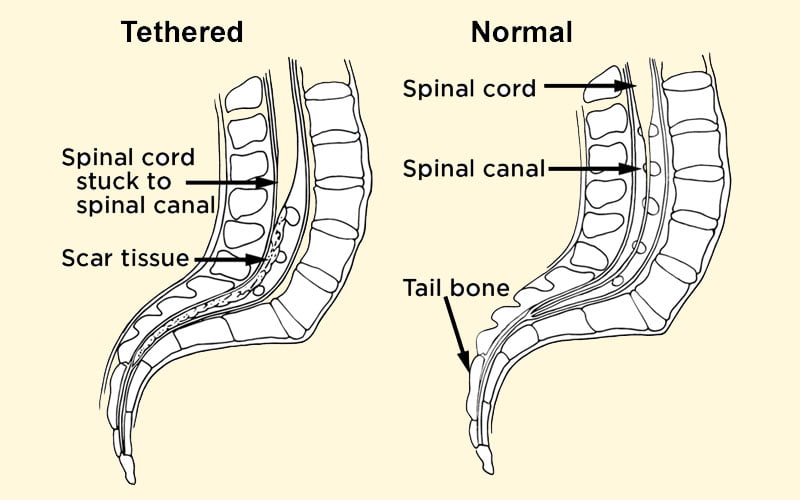
The tethered spinal cord is a medical condition that affects the spinal cord’s normal movement within the spinal column. This condition can cause various neurological symptoms and requires timely diagnosis and management. Here we will talk about what a tethered spinal cord is, its causes, symptoms, diagnosis, available treatment options, and more. Whether you are a patient, a caregiver, or simply curious about medical conditions, this article will provide valuable insights and information about this complex condition.
A tethered spinal cord refers to a condition where the spinal cord, which is the bundle of nerves extending from the base of the brain down the spinal column, becomes abnormally attached to surrounding tissues. Normally, the spinal cord has the freedom to move within the spinal column, allowing for flexible body movement. However, in cases of a tethered spinal cords, this movement is restricted, leading to various complications.
The tethering of the spinal cord can occur due to various factors, such as:
The symptoms can vary depending on the age of the affected individual and the severity of the condition. Some common symptoms include:
Proper diagnosis is crucial for effective management of a tethered spinal cord. The following diagnostic tools are commonly used:
This non-invasive imaging technique helps visualize the spinal cord and surrounding structures, enabling the identification of tethering.
For infants and young children, ultrasound imaging can be used to assess the spinal cord’s condition.
A thorough neurological examination helps in evaluating symptoms and neurological deficits.
The treatment approach depends on several factors, including the patient’s age, overall health, severity of symptoms, and the underlying cause of tethering. Some common treatment options include:
A: It is caused by factors such as spina bifida occulta, tumor growth, trauma, surgical complications, or be present from birth without any apparent cause.
A: Diagnosis is generally done using MRI, ultrasound (for infants), and a neurological examination.
A: Common symptoms include chronic back pain, leg weakness or numbness, bladder and bowel control issues, scoliosis, foot abnormalities, and changes in walking patterns.
A: No, treatment options vary based on the individual’s condition and may include surgery, physical therapy, pain management, monitoring, and lifestyle changes.
A: While complete cure is not always possible, proper management can alleviate symptoms and improve quality of life.
A: Recurrence is rare but possible, depending on the underlying cause and the surgical approach.
In conclusion, a tethered spinal cord is a complex medical condition that requires prompt attention and management. Understanding the causes, symptoms, and available treatment options is crucial for patients and caregivers alike. If you suspect or are experiencing related symptoms, seek medical advice for proper evaluation and personalized care. Remember, early detection and intervention can significantly improve outcomes and enhance overall well-being.
Recommended other topics: Which Vitamin Deficiency Causes Hair Loss?










© InfoDoot. All Rights Reserved.